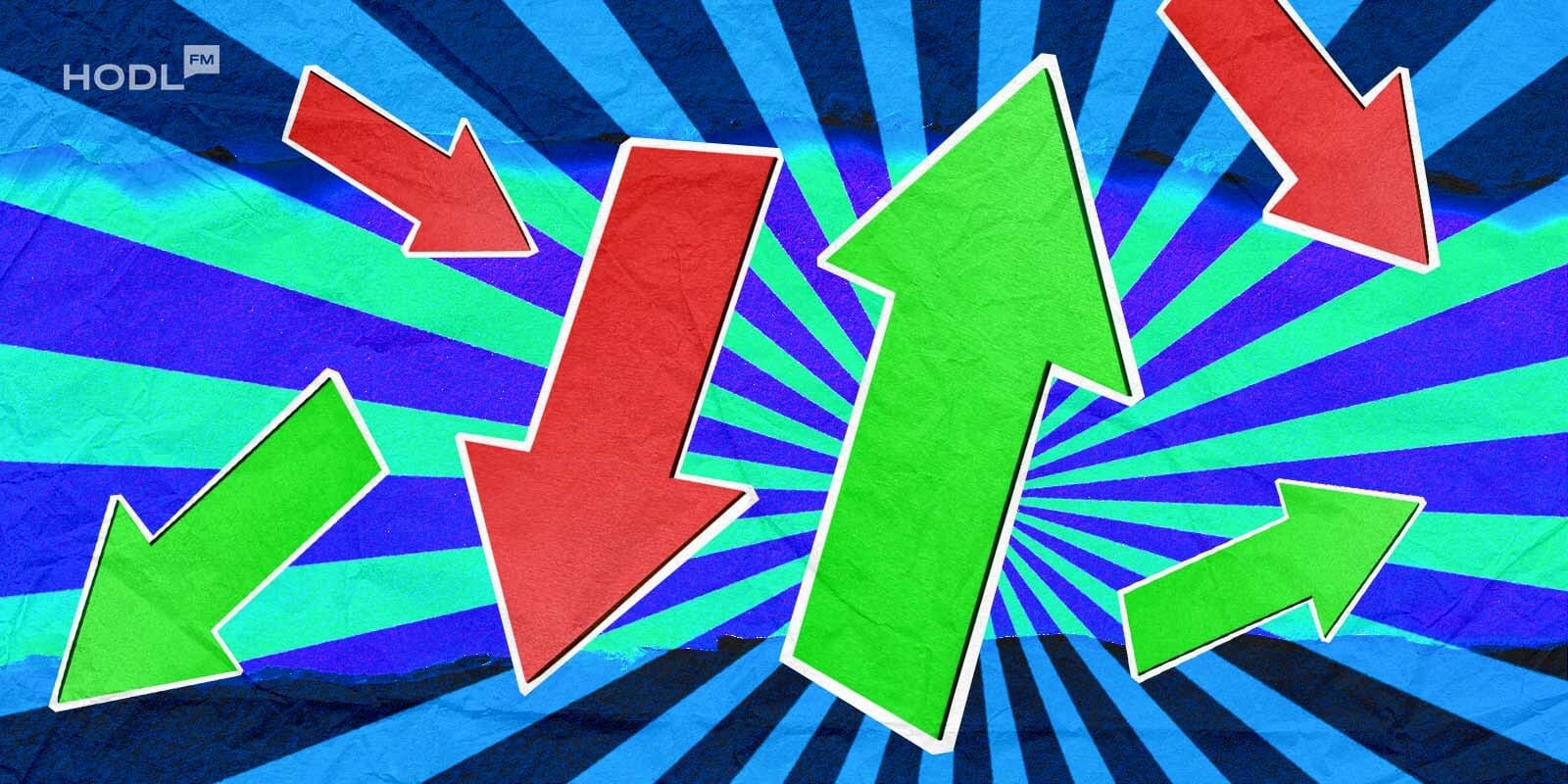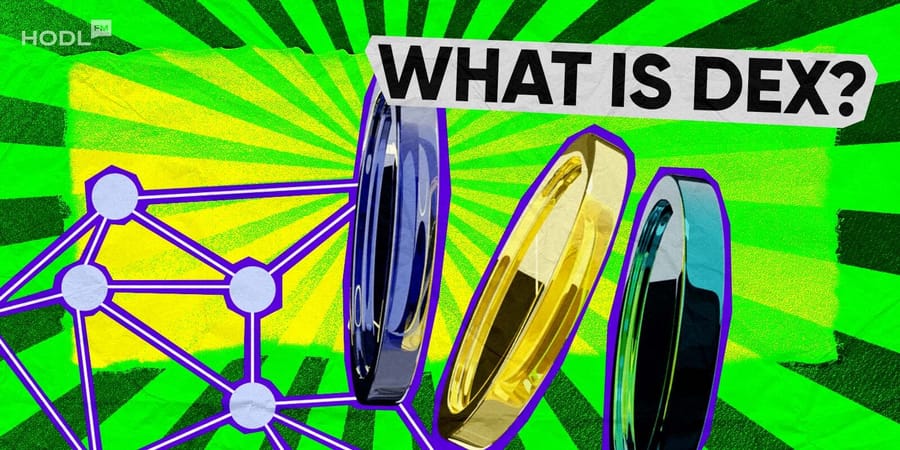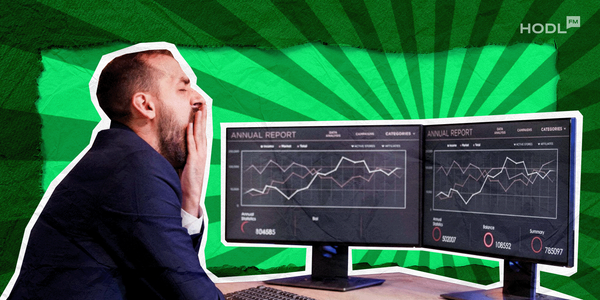What if you could exchange crypto without giving your money to a third party? This is what DEXs (decentralized exchanges) are. Today, there are about 1,000 DEXs that receive about 200 million monthly visits, showing the rise of the crypto DEX ecosystem. In this article, the mechanics, advantages, and drawbacks of decentralized exchanges are explained.
What Is a DEX?
DEX (decentralized exchange) is a peer-to-peer market of cryptocurrency. You do not deposit money with a company, but link your crypto wallet and trade with other people. Practically, a DEX relies on blockchain to match orders and devise trades through smart contracts. DEXs are designed with no centralized authority in charge of trading. Exchanges occur through code on the chain. You just have to connect your wallet (e.g., MetaMask), ratify the trade, and the smart contract does the rest.
How Does a DEX Work?
A majority of decentralized exchanges do not use traditional buyers or sellers. Instead, they use liquidity pools and smart contracts to perform trades. The heart of this system is smart contracts. These contracts serve as the exchange operator, which controls the liquidity pools and processes each swap in the correct way.
Most DEXs rely on automated market makers (AMMs) that access on-chain liquidity pools instead of relying on a different trader to provide tokens. Any person can add liquidity to such pools, adding two tokens of equal value, and they will then act as a liquidity provider (LP). The pool has a pricing algorithm to maintain balance. For example, when someone makes a trade and withdraws a token, lowering its supply in the pool, the contract will automatically raise the price of the token.
Some DEXs, such as dYdX and 0x Protocol, however, continue to rely on on-chain order books. These exchanges enable a user to set limit orders directly on the blockchain, but trades are also executed without a centralized custodian. DEX aggregators like 1inch and Paraswap allow users to scan several exchanges to locate the best trading deal on various platforms.
Advantages of Using a DEX
The main advantages of using a decentralized exchange are the following:
- No intermediary (User Custody): You are always trading with your personal DEX wallet, and a third party doesn't hold your money. This removes the counterparty risk of losing money in case an exchange is hacked or becomes insolvent.
- Enhanced privacy: Most DEXs do not need much or any personal information. You usually do not require any ID or KYC procedure, only the wallet address.
- Large token choice: Since anyone can add a token by adding liquidity, DEXs can have an extremely large selection of tokens.
- Censorship resistance: DEXs are based on public blockchains, which means that they cannot lock your account or prevent trades. No central operator to put limitations on. You are free to trade as long as the blockchain is in operation.
- Security: Since you hold your crypto, DEXs eliminate the single point of failure that a centralized exchange is. It does not have a central hot wallet that can be hacked. The money remains in the wallets of the users until it is traded.
- Low listing barriers: DEXs do not typically have listing fees as CEXs. Anyone can create a token pool without paying listing fees.
Limitations and Challenges
Being powerful, DEXs possess certain disadvantages as well:
- Reduced liquidity: DEX liquidity can be low, particularly with smaller or newer tokens. This may lead to slippage of prices on big transactions. Conversely, major coins tend to have a deeper order book on popular CEXs.
- Smart contract risk: DEX code might be buggy. Since everything is on-chain, a bug or hack in the smart contract may result in lost money or a rug pull. It is the responsibility of users to believe that the contract is audited and safe.
- Complicated UX: New users can be confused by DEX UI. You have to take care of the wallet approvals, network selection, and slippage settings. It is possible to lose permanently due to a simple mistake (such as sending tokens to the wrong blockchain).
- No fiat support: DEXs do not accept Fiat. It is not possible to deposit a bank transfer or credit card. In order to use a DEX, one must first purchase crypto on a centralized on-ramp or exchange.
- Network fees & speed: All DEX trades are blockchain transactions, hence you pay gas fees and wait for confirmations. Fees on congested chains such as Ethereum may shoot up and stall trades. This is mitigated by layer-2 DEXs and other chains, but remains a problem.
- Regulatory uncertainty: DEXs are not subject to KYC, and therefore, they are in the gray area of legislation. In the future, new rules may be introduced about the operation of DEX or its users. The space has to deal with this uncertainty.
Concisely, DEX exchange sacrifices part of the convenience in favor of decentralized crypto trading.. They offer greater control, but require more technical understanding. Newcomers are advised to begin with small transfers and get to know how the process works before transferring large sums of crypto.
DEX vs CEX
DEX and CEX in crypto are two alternative methods of crypto trading. Let us take a side-by-side comparison of their main differences:
Although CEXs are usually user-friendly, have fiat on-ramps, and regulated compliance, DEXs offer independence and anonymity. An example would be that on a DEX, you trade and send out of your wallet without any KYC, but on a CEХ, you hand over the responsibility of your coins and identity to the exchange.
Popular Decentralized Exchanges You Should Know
These are some of the best decentralized exchanges currently, the platforms that millions of users entrust with swapping tokens, supplying liquidity, and getting to know DeFi.
Uniswap
Uniswap is the most popular DEX crypto exchange on Ethereum and the first one that proposed the AMM model. Having a total value locked (TVL) of billions of dollars, it has deep liquidity when it comes to swapping ETH and ERC-20 tokens with low slippage. Uniswap is a multi-chain protocol that runs on Polygon and Arbitrum and has its governance token, the UNI token, which is used to vote on protocol changes.
PancakeSwap
PancakeSwap is a BEP-20-based decentralized exchange that operates on the BNB Smart Chain (BSC) and allows fast and cheap trading. It also supports multi-chain swaps (e.g., Ethereum and Aptos) and offers more than a basic trading experience, including a lottery, NFT marketplace, and yield farming. Its governance and reward mechanisms are powered through the CAKE token.
Curve Finance
Curve is a platform that focuses on low-slippage trading between pegged assets (such as wBTC) and stable assets (such as USDC and DAI). It is designed to trade in large quantities with a low impact. Curve was originally deployed on Ethereum, but is now also on networks such as Avalanche and Fantom. Liquidity providers get fees and CRV tokens, and their effective pools are popular among DeFi professionals.
SushiSwap
SushiSwap is an offshoot of Uniswap that introduced additional incentives to liquidity providers through its SUSHI token. It provides basic AMM trading, along with features like staking and farming. SushiSwap is currently live on multiple chains such as Ethereum, BSC, and Arbitrum as a DeFi exchange, and follows a community-driven model.
dYdX
dYdX is a decentralized derivatives exchange that supports trading of derivatives, including perpetual futures, with a maximum leverage of 20x. In contrast to spot-based DEXs, it is designed for experienced users and operates on a layer-2 network to perform quickly. Trading and staking are also some of the ways users can receive the DYDX token.
1inch (Aggregator)
1inch is a DEX aggregator that allows finding the most favourable prices by dividing the trade between different platforms such as Uniswap, Balancer, and SushiSwap. This aids in lessening slippage and reducing transaction costs.
Tips for Maximum Security When Trading on a DEX
The risk can be mitigated by the following practices:
- To begin with, check that you are on the right DEX site or dApp. Phishing sites tend to mimic the real ones, thus, it is essential to save trusted websites' URLs and compare contract addresses with official ones.
- Store your seed phrase or private key in a safe place offline and use a well-established crypto wallet, e.g., MetaMask, Trust Wallet, or a hardware wallet. In case you lose access to your wallet, your money is not retrievable.
- Restrict approvals as much as possible, and revoke access following the trade to minimize exposure to malicious contracts.
- A large tolerance of slippage may result in undesirable pricing, whereas a small one will result in the failure of the transaction.
- Make sure that you are on the right blockchain network and have sufficient amounts of native tokens to cover transaction fees. Failed or lost transactions can occur by using the wrong network or a lack enough gas.
How to Use a Decentralized Exchange
In order to use a DEX, you first have to install a non-custodial wallet (MetaMask or Trust Wallet) on your browser or your phone. After that, you can deposit cryptocurrency into the wallet - in case of Ethereum-based DEXs, it usually means depositing the ETH and tokens you want to trade. Be sure you are on the correct blockchain network.
After that, go to the official page of the DEX you require and connect your wallet. Choose the token you are giving and the token you want to get, and type the amount. The DEX interface will show an estimated return, fees, and slippage tolerance, which you may adjust when needed.
Take a second look at the transaction details before confirming, for example, gas fees and the exchange rate quoted. Swapping can take place with you authorizing the token, which gives the DEX permission to access it. Once approved, the trade should be sent, and the transaction should be marked in your wallet. This will be carried out on the blockchain, and once the exchange is confirmed, the new tokens should appear in your wallet.
The Future of DEXs
I think that development, scalability, and cross-chain are the most promising. Layer-2 systems such as Arbitrum and zk-Rollups are making trading cheaper and faster, and cross-chain systems such as Thorchain are making swaps between blockchains possible.
I expect DEXs to embrace more sophisticated functions, such as limit orders, derivatives, and automated DEX trading tools. They will also be more incorporated with DeFi, in terms of staking, liquidity mining, and formal governance through DAOs.
FAQs
Can I trade fiat currency on a DEX (DEX meaning crypto)?
No, DEXs do not deal with crypto-to-fiat trades. They do not cover bank deposits, credit cards, or fiat currencies. In order to get to work with a DEX, you need to convert your fiat to cryptocurrency (on a fiat-friendly exchange) and then move that crypto into your wallet. Then you can exchange that crypto on the DEX for other crypto assets.
What are the best DEX platforms in 2025?
The most popular decentralized exchanges nowadays are Uniswap, PancakeSwap, Curve, SushiSwap, and dYdX, among others. Instead, as an example, Uniswap (Ethereum) and PancakeSwap (BNB Chain) have billions of dollars in liquidity each. It is also common to see 1inch as a DEX aggregator with the best prices in the DeFi community. In 2025, these DEXs were chosen based on their liquidity, security track record, and innovation.
Do I need to verify my identity on a DEX?
In general, DEXs do not require any KYC. Since the trades occur directly out of your wallet, DEXs do not usually require any personal information. Your account is your wallet address. This is unlike exchanges that are centralized and are almost always identity-verified. That is why DEXs are popular when it comes to privacy, but note that the situation might change in the future.

Disclaimer: All materials on this site are for informational purposes only. None of the material should be interpreted as investment advice. Please note that despite the nature of much of the material created and hosted on this website, HODL FM is not a financial reference resource, and the opinions of authors and other contributors are their own and should not be taken as financial advice. If you require advice. HODL FM strongly recommends contacting a qualified industry professional.





